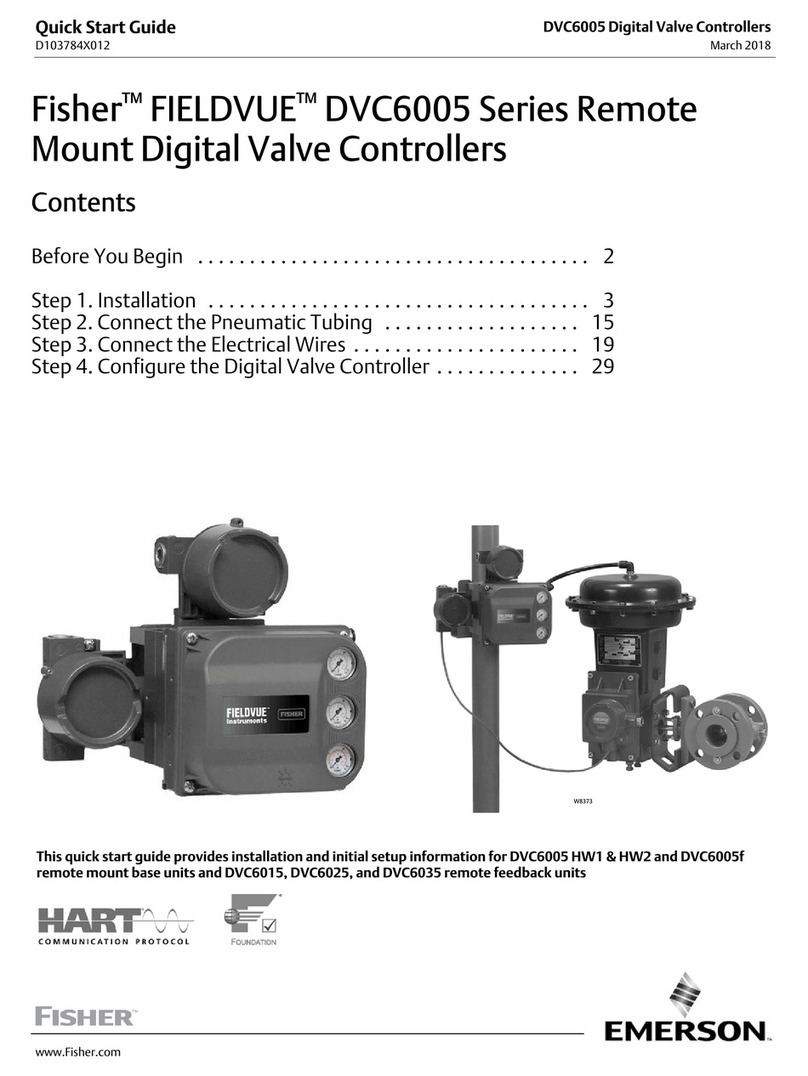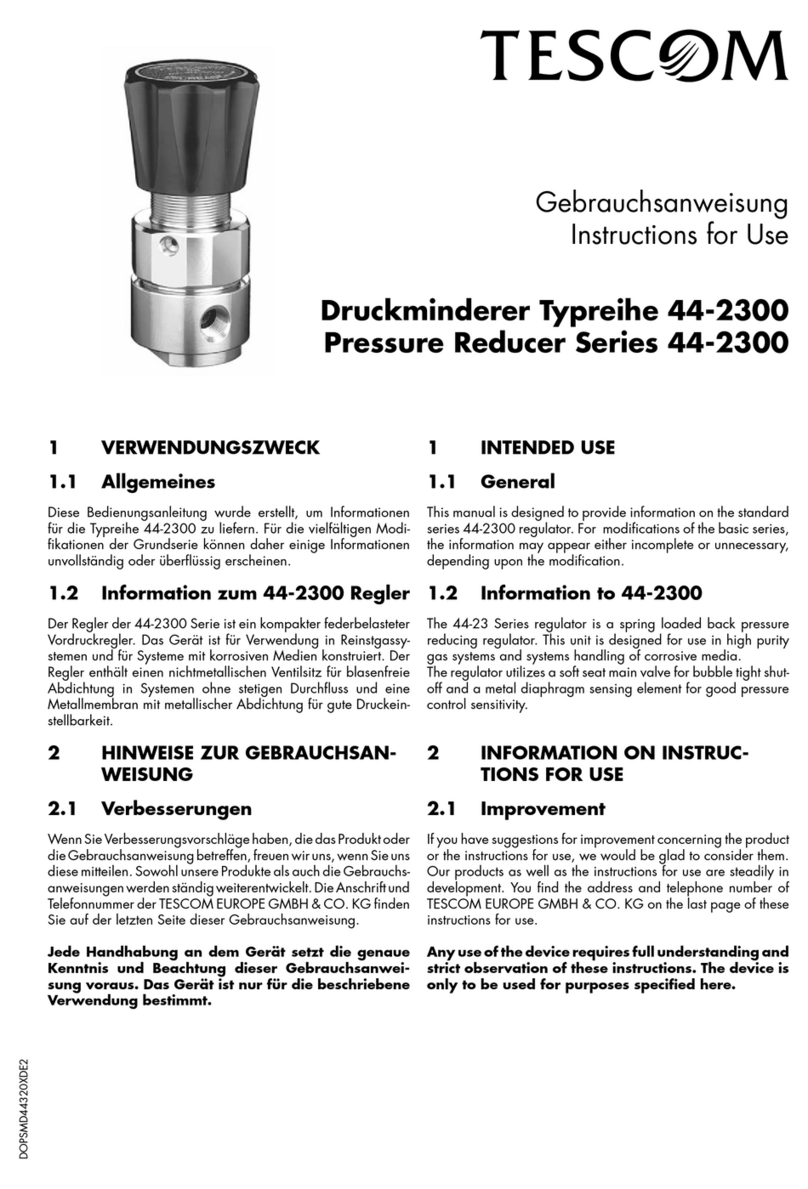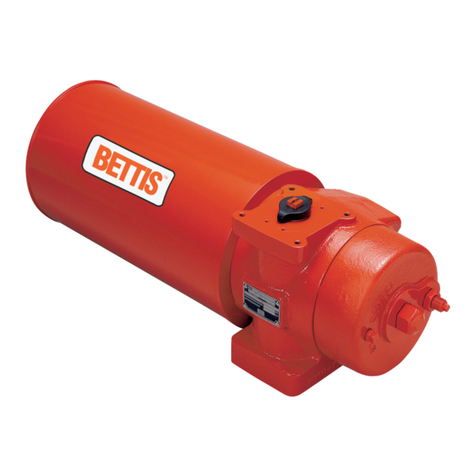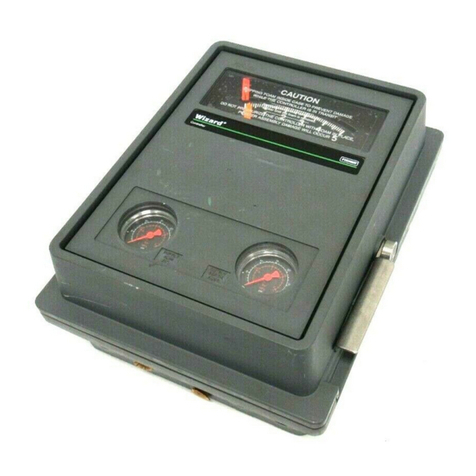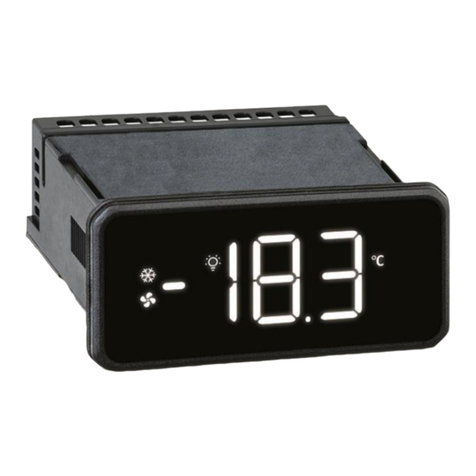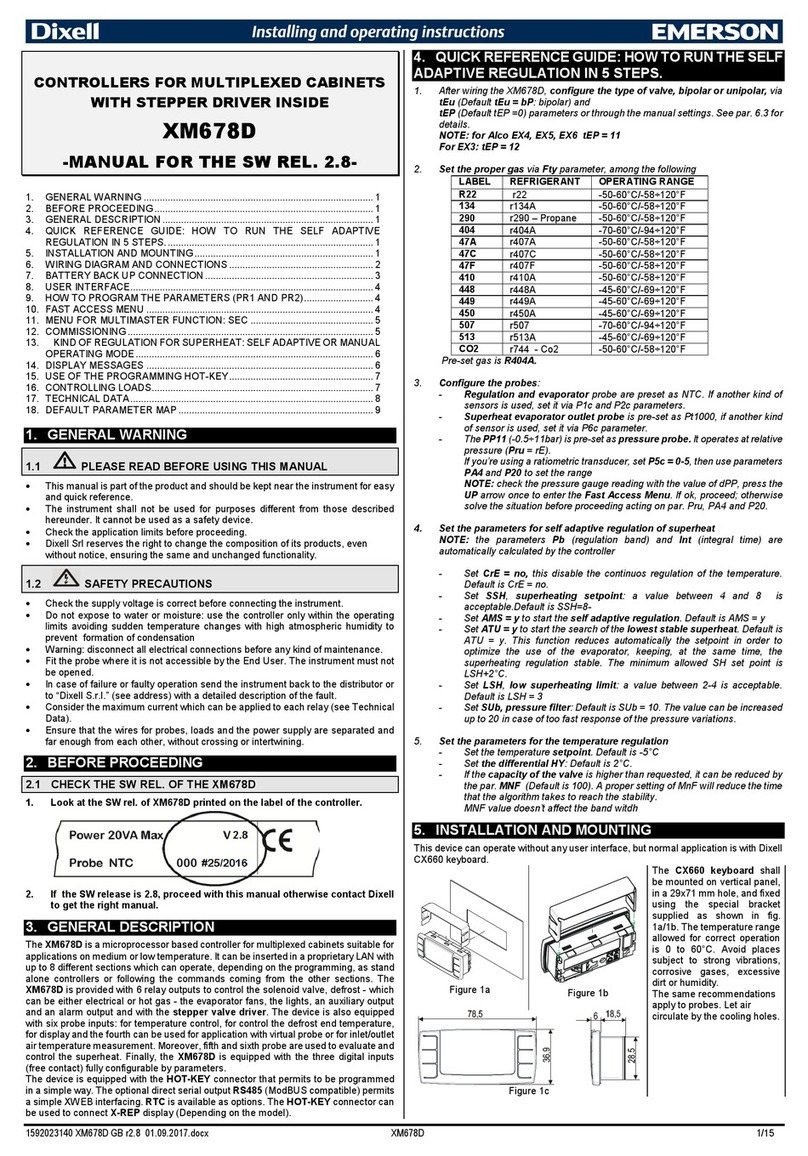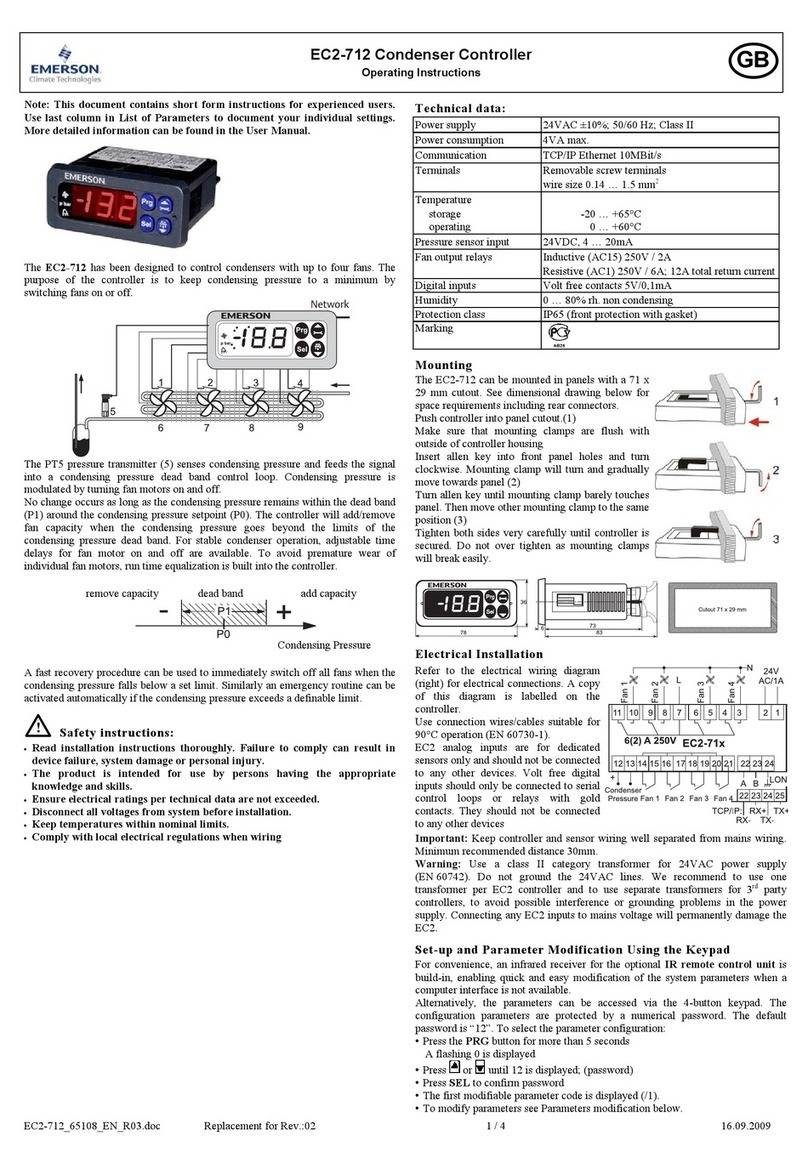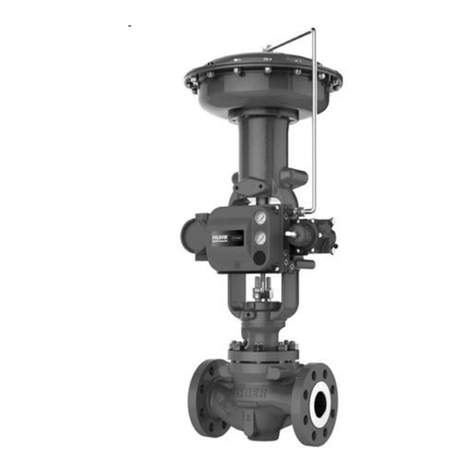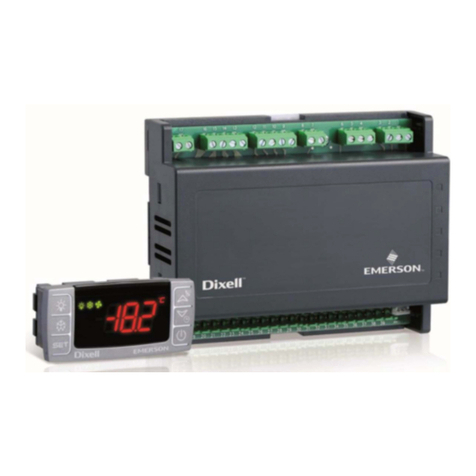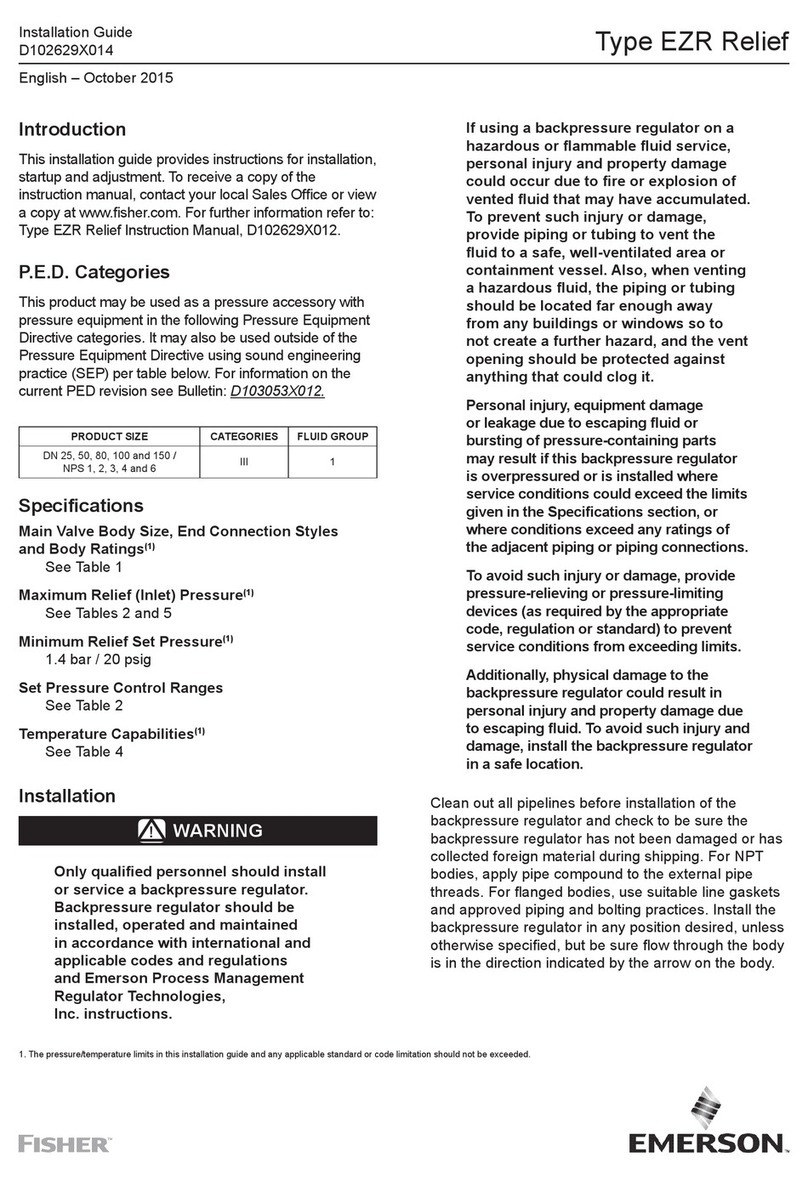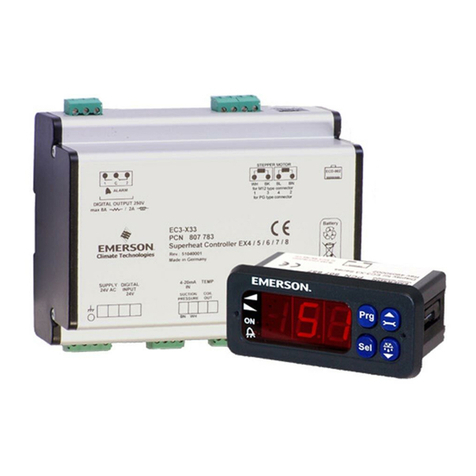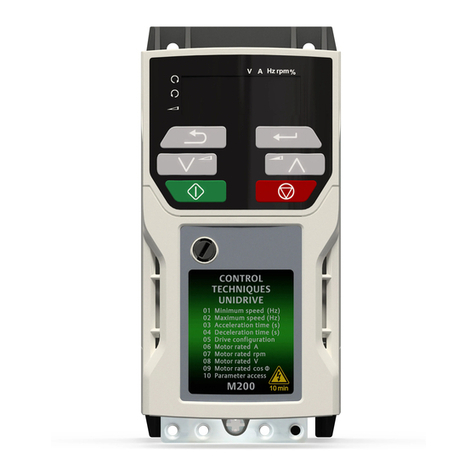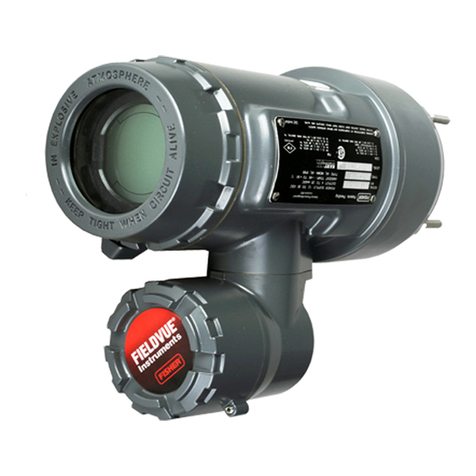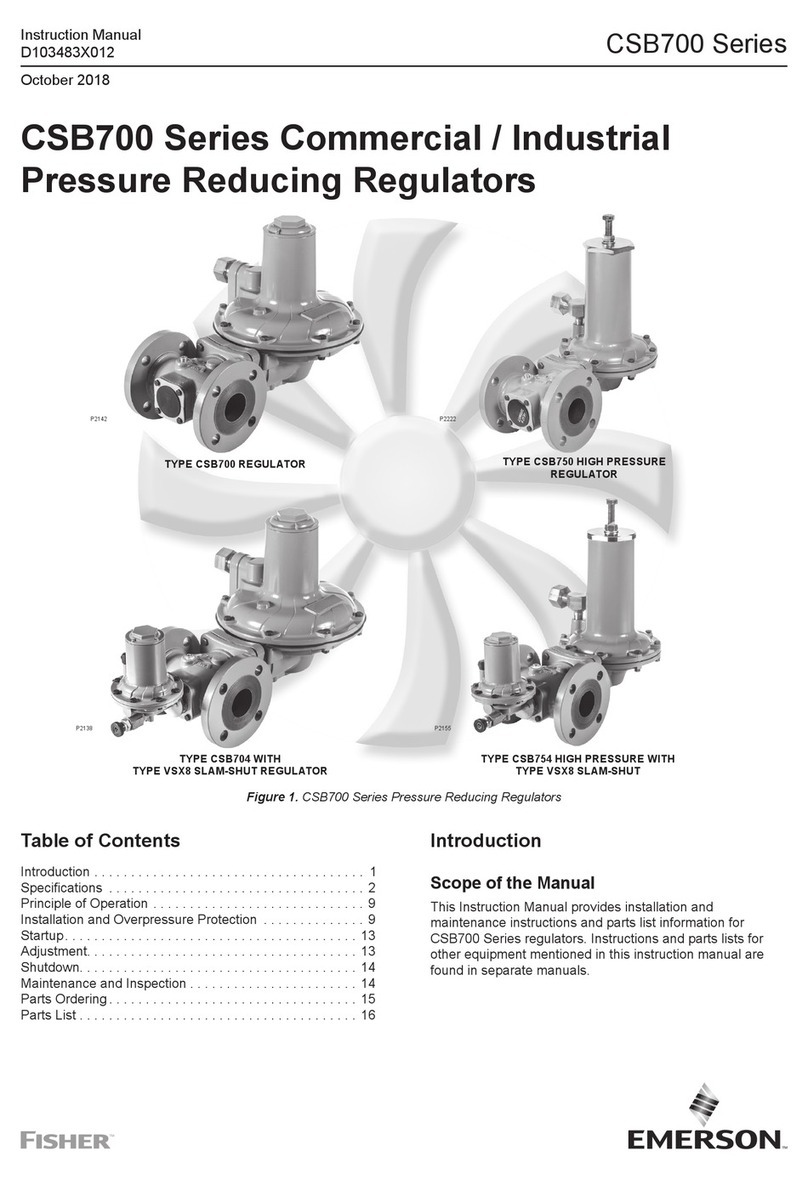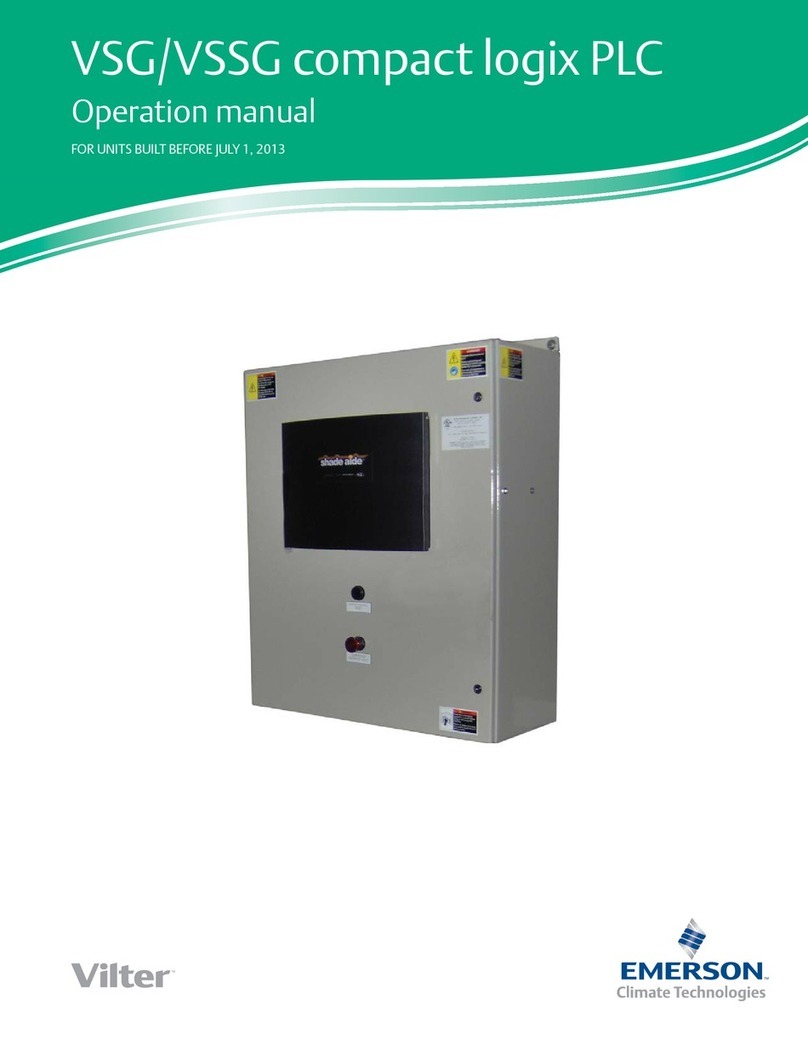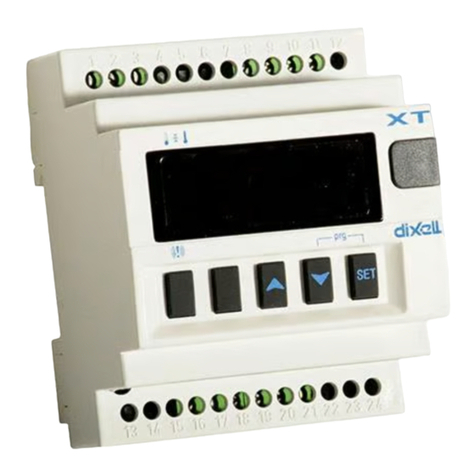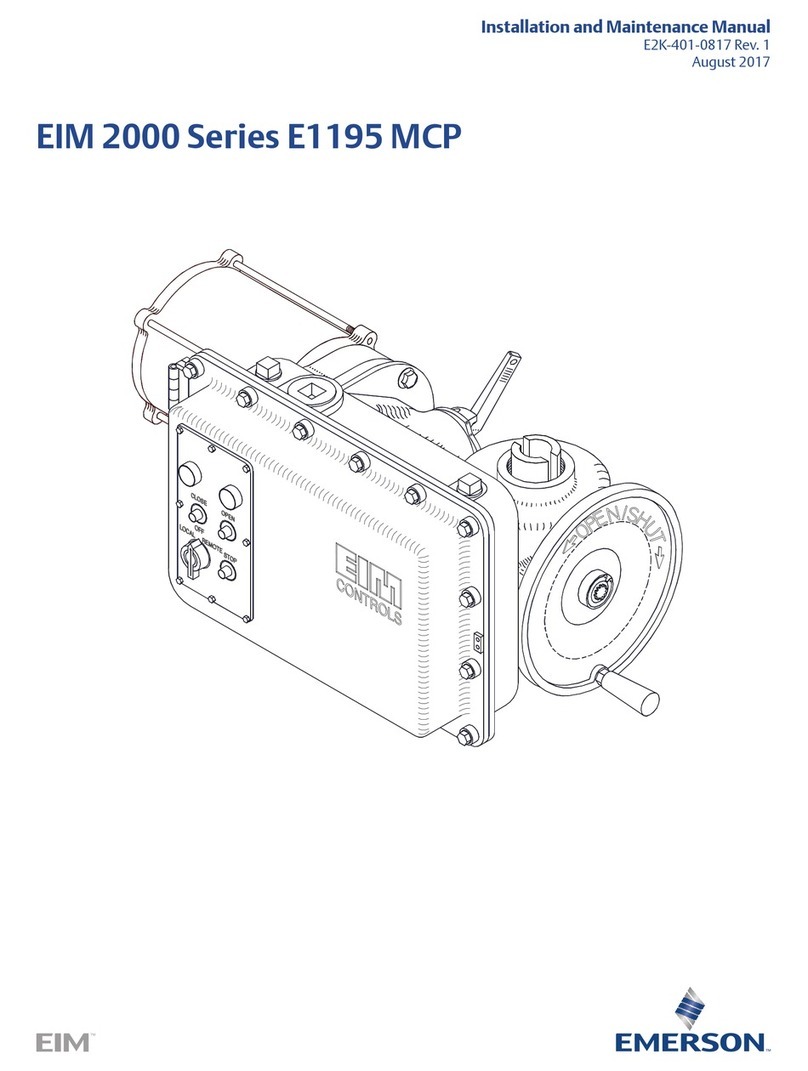
All Installations
The robust design of the Type EZR allows this
regulator to be installed indoors or outdoors. When
installed outdoors, the Type EZR does not require
protective housing. This regulator is designed
to withstand the elements. The powder paint
coating protects against minor impacts, abrasions
and corrosion.
When installed indoors, no remote venting is required
except on the pilot spring case. This regulator can
also be installed in a pit that is subject to ooding
by venting the pilot spring case above the maximum
possible ood level so the pilot setting can be
referenced at atmospheric pressure.
1. Only personnel qualied through training and
experience should install, operate and maintain a
regulator. Before installation, make sure that there
is no damage to or debris in the regulator. Also,
make sure that all tubing and piping are clean
and unobstructed.
Note
The Type EZR optional inlet strainer is
intended to prevent occasional large
particles from entering the main valve.
If the gas contains continuous particles,
upstream ltration is recommended.
When using an inlet strainer (key 23), do
not use the shim (key 23) and vice versa.
2. Type EZR regulator may be installed in any
orientation, as long as ow through the regulator
matches the direction of the arrow on the main
valve body. However, for easier maintenance,
install the regulator with the bonnet up.
CAUTION
When installing a Type EZR trim package
in an existing E-body, make sure ow is
up through the center of the cage and
down through the cage slots. In some
cases, correct ow path is achieved
by removing the body from the line
and turning it around. If this is done,
change the ow arrow to indicate the
correct direction. Damage may result
if ow is not in the correct direction.
After assembly, check the regulator for
shutoff and leakage to atmosphere.
Types EZR/399 restricted trim bodies
(NPS 6 x 4, 8 x 4, 8 x 6 and 12 x 6 /
DN 150 x 100, 200 x 100, 200 x 150 and
300 x 150) are different than EW valve
bodies and are not interchangeable.
Install trims only in correct restricted
trim bodies.
3. The standard pilot mounting position is as shown in
Figure 1. Other mounting positions are available.
4. Apply a good grade of pipe compound to the
external pipeline threads for a threaded body or
use suiTable line gaskets for a anged body. When
installing butt weld end connections, remove trim
before welding and make sure to use approved
welding practices. Use approved piping procedures
when installing the regulator.
CAUTION
A regulator may vent some gas to
the atmosphere. In hazardous or
ammable gas service, vented gas may
accumulate and cause personal injury,
death or property damage due to re
or explosion.
Vent a regulator in hazardous gas
service to a remote, safe location away
from air intakes or any hazardous
location. Protect the vent line or
stack opening against condensation
or clogging.
5. A clogged pilot spring case vent may cause the
regulator to function improperly. To prevent plugging
(and to keep the spring case from collecting moisture,
corrosive chemicals or other foreign material) point
the vent down, orient it to the lowest possible point
on the spring case or otherwise protect it. Inspect the
vent regularly to make sure it has not been plugged.
To remotely vent a spring case, remove the vent
and install obstruction-free tubing or piping into the
1/4 NPT vent tapping. Provide protection on a remote
vent by installing a screened vent cap onto the
remote end of the vent pipe. The 161AY Series pilot
has a vent restriction (key 55, Figure 20) to enhance
low ow stability. Do not remove this restriction.
!
WARNING
To avoid freeze-up because of pressure
drop and moisture in the gas, use
antifreeze practices, such as heating the
supply gas or adding a de-icing agent to
the supply gas.
7
Type EZR
